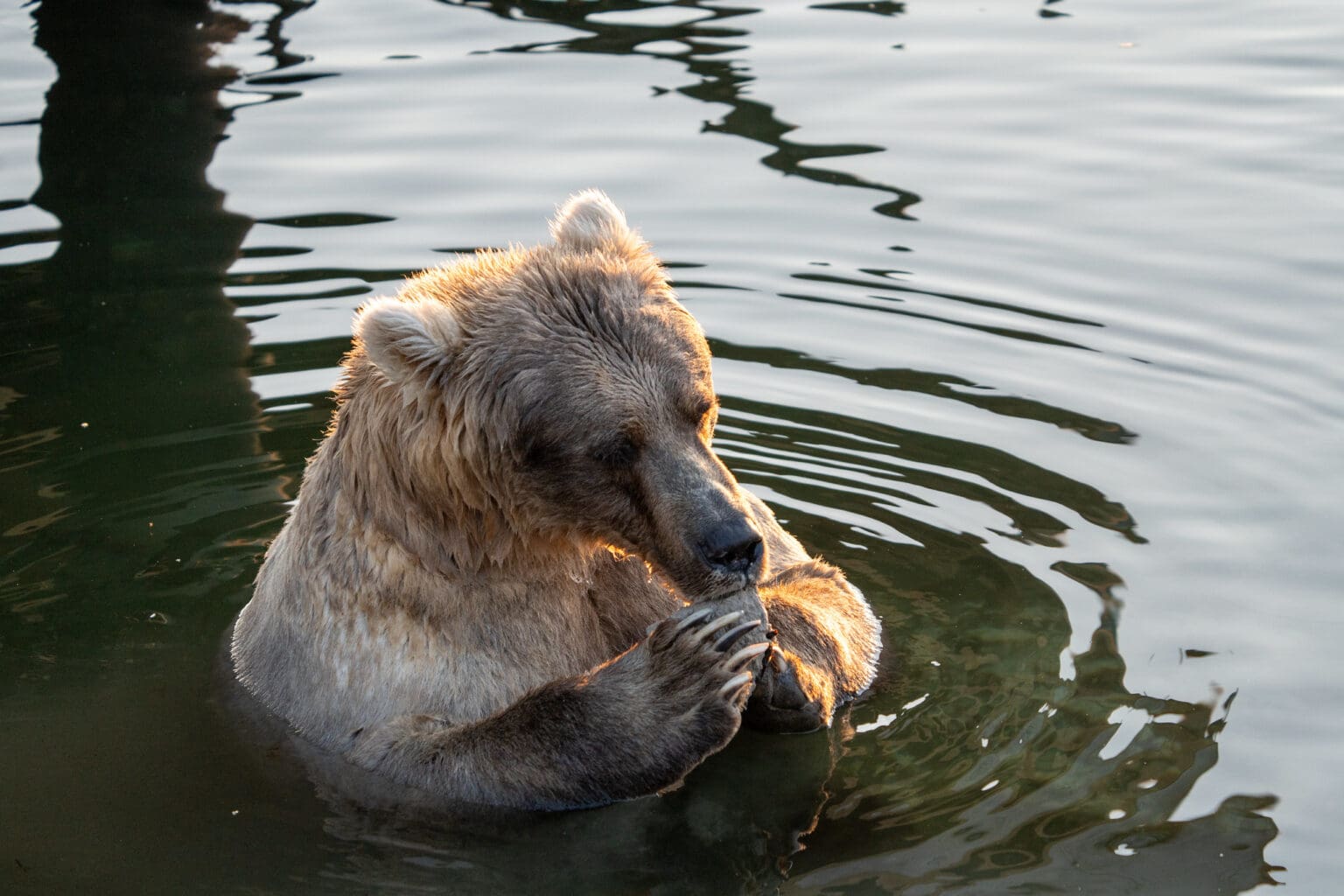Fat Bear Week ended Tuesday, Oct. 10, putting to bed the National Park Service’s annual paean to Ursus arctos.
The promotion has become so popular that a record 1.38 million votes were cast to predict who would become the biggest, baddish brown bear at Alaska’s Katmai National Park. The bear 128 Grazer was crowned champion on Tuesday, in the final vote.
The lovable campaign highlights the public’s fascination with bears, who have become proud symbols of the untamed wilderness as apex predators in a shrinking habitat.
The event culminated with Fat Bear Tuesday to announce the winner, but not before the New York Times, Washington Post, NPR, BBC and everyone else, um, weighed in.
Bears, particularly in encounters with humans, gain more traction these days than the latest Republican presidential primary debate.
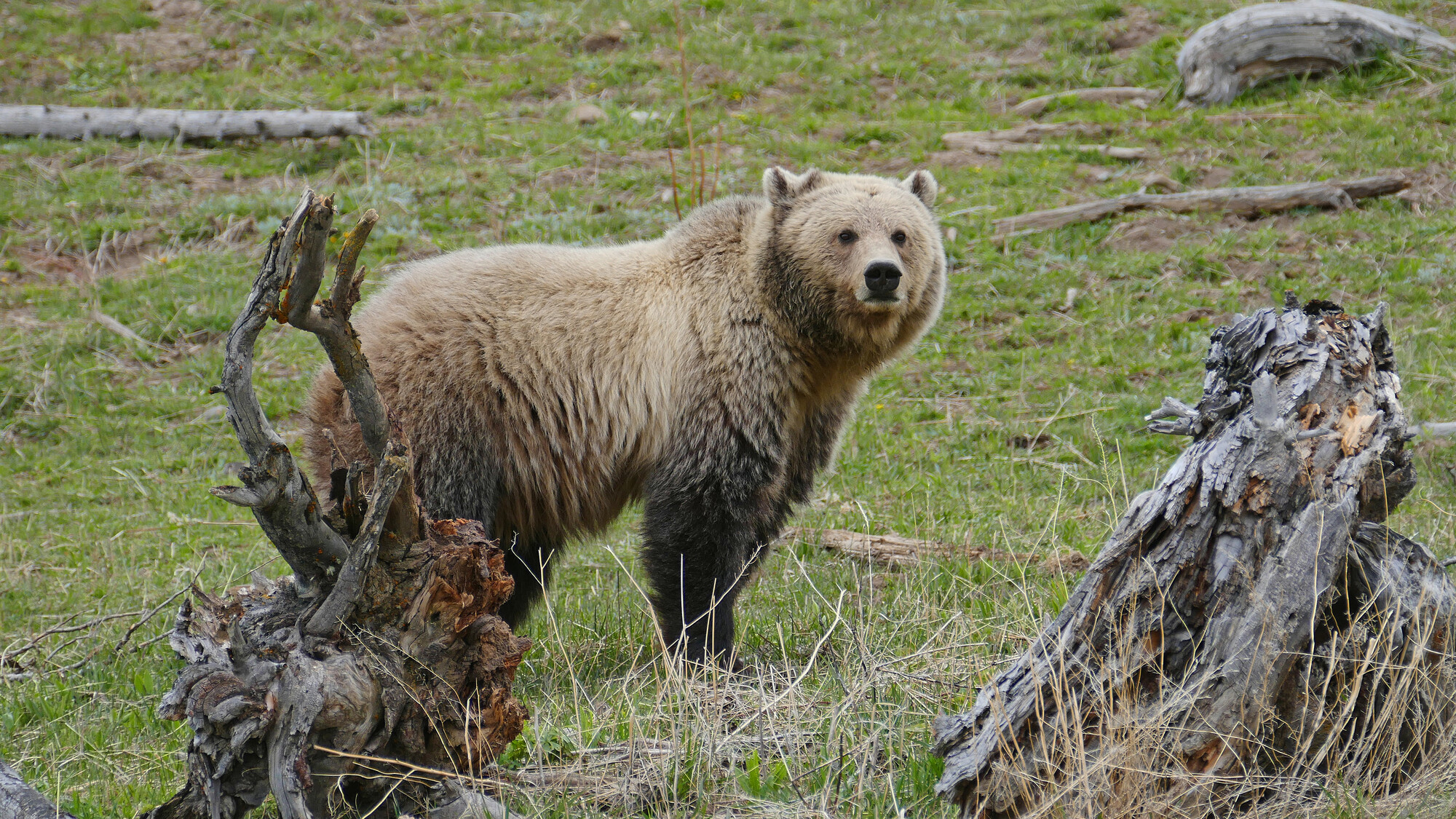 Grizzly bears are one of the attractions of Yellowstone National Park because of their majesty, but they also present a risk to humans in rare instances. (Photo courtesy of Scott Fiikin/WDFW)
Grizzly bears are one of the attractions of Yellowstone National Park because of their majesty, but they also present a risk to humans in rare instances. (Photo courtesy of Scott Fiikin/WDFW)
A few current events:
- An unidentified bear injured a 73-year-old woman on Oct. 1 west of Glacier National Park in Montana. Her husband used bear spray to get the beast to move away, said Montana Fish, Wildlife & Parks officials.
- A Canadian couple and their dog died on Sept. 29 after a grizzly bear attack in a remote area of Banff National Park where they had camped. The victims, both 62, emptied a canister of bear spray during the lethal attack, authorities said. It had been almost 50 years since anyone died from a grizzly bear encounter at the park in the Canadian Rockies.
- A grizzly bear mauled a hunter on Sept. 8 in southwestern Montana while he tracked a deer, Gallatin County Sheriff Search and Rescue reported.
- A few days before the mauling, Montana wildlife officials euthanized a grizzly after it broke into a West Yellowstone home to grab a container of dog food. Officials determined the sow had killed a Kansas woman in late July on a trail near West Yellowstone.
- Then there is beleaguered Prince George in north-central British Columbia. Conservation officers in the city of 74,000 residents reported killing 21 bears in less than three weeks in August. Officials had received thousands of calls about human-bear conflicts.
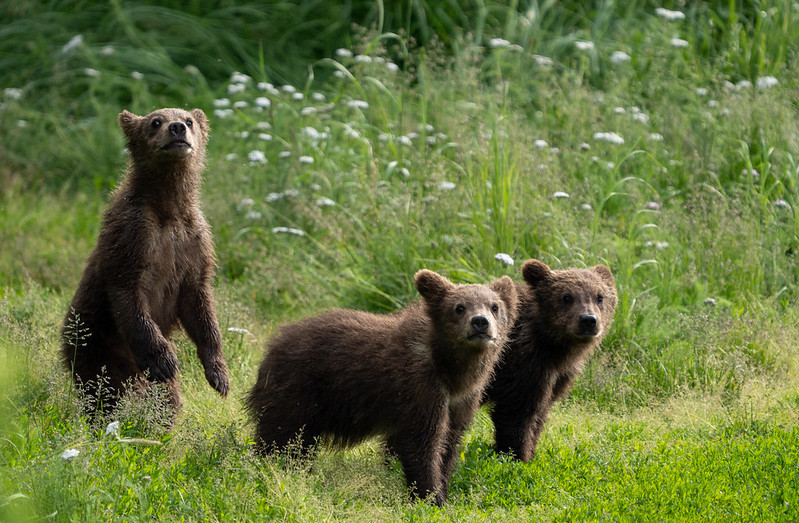 Three brown bear cubs play in the spring at Katmai National Park, where the predators take center stage every fall as they bulk up for the winter hibernation. (Photo courtesy of Katmai National Park and Preserve)
Three brown bear cubs play in the spring at Katmai National Park, where the predators take center stage every fall as they bulk up for the winter hibernation. (Photo courtesy of Katmai National Park and Preserve)
The latest headlines, which include a report this week on the increasing tensions with bears in western Montana, provide fodder for opponents of a plan to reintroduce grizzlies to the North Cascades. The National Park and U.S. Fish and Wildlife Services opened a public commentary period on the proposal the day before the fatal attack in Banff.
The encounters did nothing to assuage fears last week when friends and I headed into black bear country in North Cascades National Park.
The park service has erected signs about bear activity along Cascade River Road outside of Marblemount and at the Cascade Pass trailhead.
“DO NOT STOP/DO NOT EAT,” the signs warned those driving along the gravel road and hikers ascending the trail. Rangers closed a picnic area after a bear got a meal at the trailhead because of improper food storage.
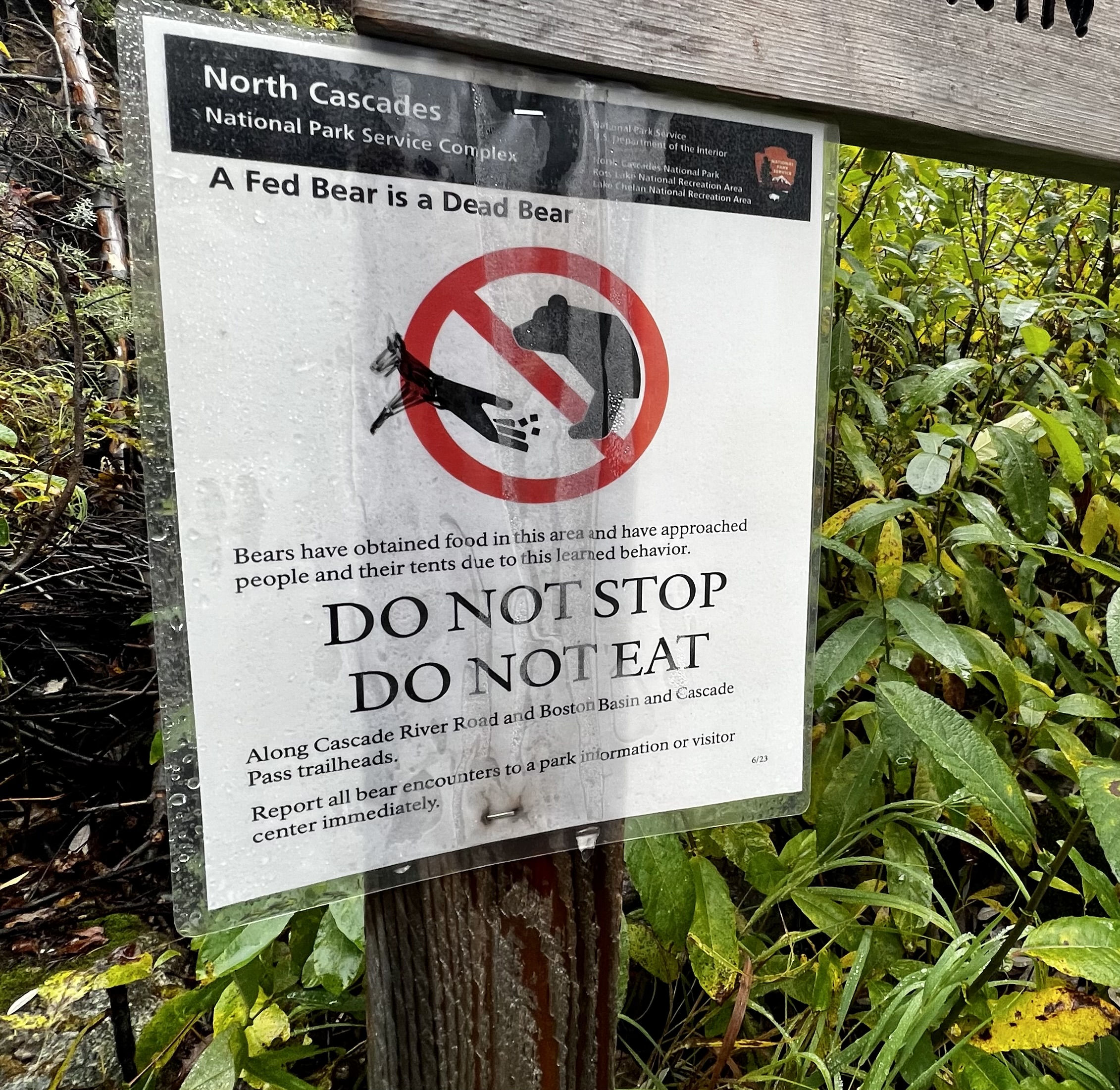 North Cascades National Park officials posted signs warning visitors of bear activity at the trailhead for Cascade Pass, Sahale Glacier and Boston Basin. (Photo by Elliott Almond)
North Cascades National Park officials posted signs warning visitors of bear activity at the trailhead for Cascade Pass, Sahale Glacier and Boston Basin. (Photo by Elliott Almond)
The previous year, we saw bears stuffing themselves with berries on a slope above Cascade Pass. They were in the “Don’t bother me — I’m eating” phase and paid us no heed.
While it’s entertaining to watch the live cams of the Katmai celebrities, let’s remember autumn is a critical time for bears. The Washington Department of Fish and Wildlife reports black bears forage up to 20 hours a day to help increase their body weight by 35%.
The period of hyperphagia allows bears to increase fat reserves to support them through winter hibernation. The animals become more aggressive when scavenging for food sources.
For now, opportunistic black bears — Ursus carpetbaggus — are Washington’s big mammal on campus. The omnivores dine on berries, roots, grasses, insects, small mammals and fish.
They mostly eat vegetation, which made the summerlong drought a concern. Scientists speculate the lack of a robust wild berry crop leads desperate bears to boldly crash outdoor picnics.
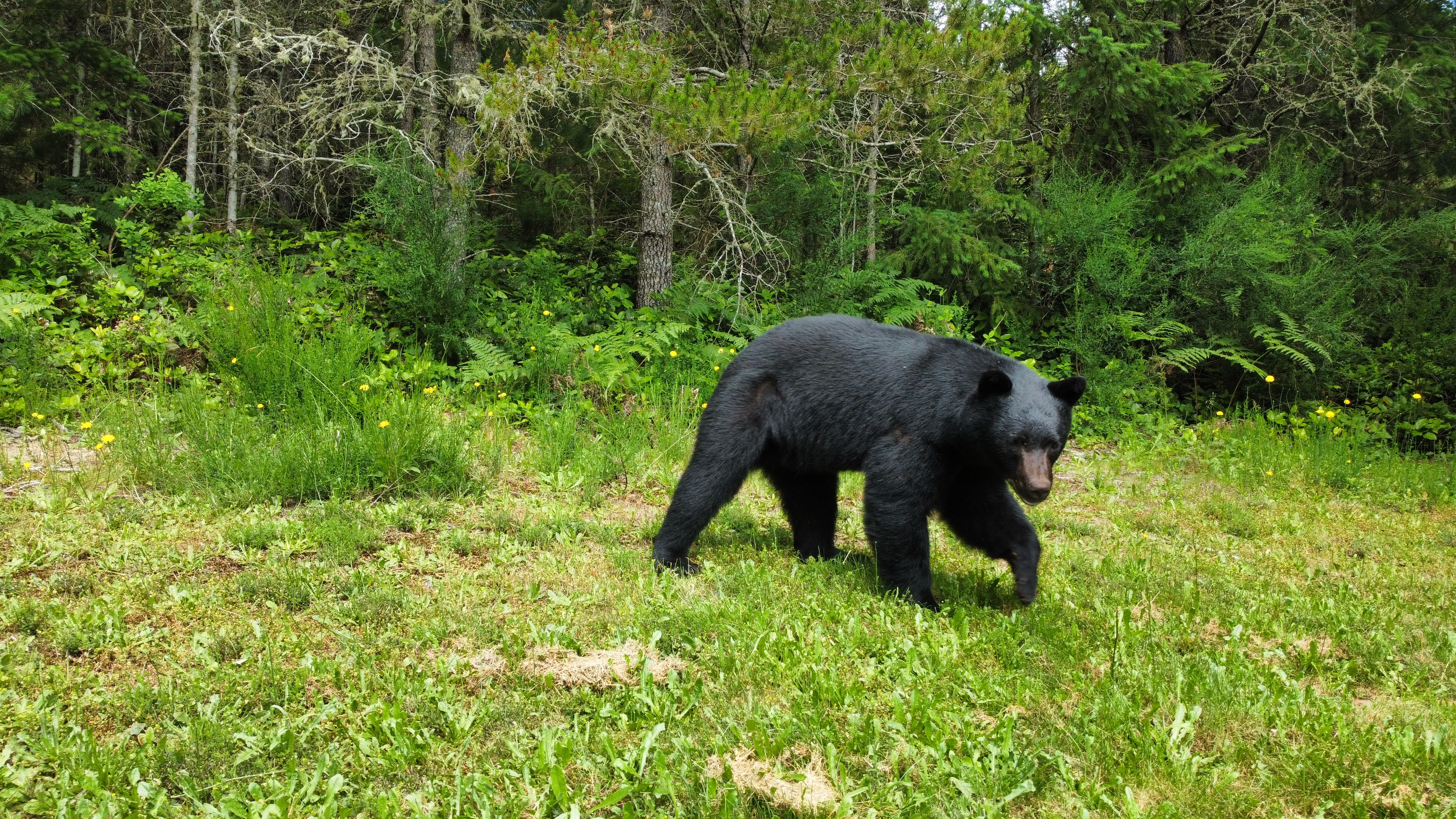 A black bear roams through the forest in the North Cascades. The bears increase their weight by 35% in the fall to prepare for winter hibernation. (Photo courtesy of Garen Martinson/WDFW)
A black bear roams through the forest in the North Cascades. The bears increase their weight by 35% in the fall to prepare for winter hibernation. (Photo courtesy of Garen Martinson/WDFW)
I’ve seen plenty of bears in the backcountry. One autumn evening years ago, I spotted a big buck on the trail in Yosemite’s Hetch Hetchy region. It looked at me and then behind it.
I stepped off the narrow path and said, “This is your home, so go by if you want.” The deer blew past me.
I kept going in the direction the buck had come as dusk descended. Then I heard shuffling in the woods around a granite outcropping. I tiptoed around the big rock to find a bear rummaging for food.
Experts say the first line of defense is making noise, standing tall and yelling at the animal. I’ve resorted to singing Pete Seeger’s “I’ve Been Working on a Railroad” and blowing a whistle. The Hetch Hetchy bear appeared unmoved by the impromptu concert.
It kept eating as the sun fell lower and lower. The bear didn’t scare me as much as the looming nightfall. It finally moved along after 20 minutes.
Chase Gunnell of the state’s Fish and Wildlife department shared some great resources for dealing with bears. The agency’s primer is a good place to start.
Department officials also offer information on their website about grizzlies, should that species return to the North Cascades soon.
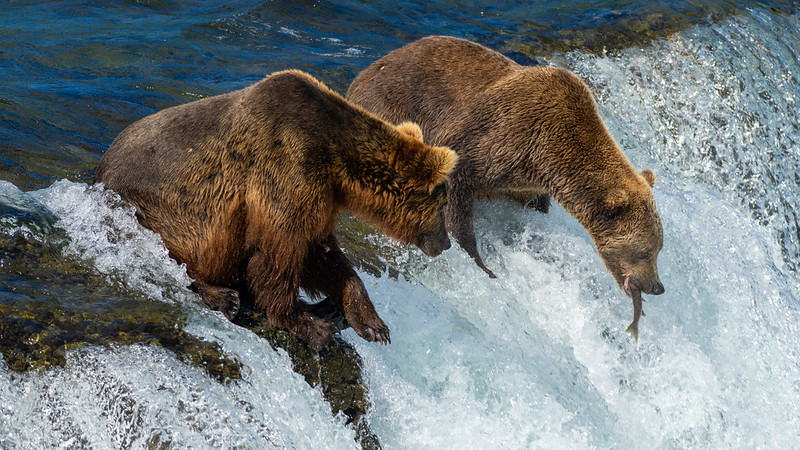 Brown bears fish for salmon while bulking up in preparation for winter’s hibernation. They can lose as much as a third of their body fat during winter. (Photo courtesy of Naomi Boak/Katmai National Park and Preserve)
Brown bears fish for salmon while bulking up in preparation for winter’s hibernation. They can lose as much as a third of their body fat during winter. (Photo courtesy of Naomi Boak/Katmai National Park and Preserve)
More resources about how to avoid conflicts include BearWise, a program managed by wildlife biologists, and the Interagency Grizzly Bear Committee, a cooperative that supports the recovery and ongoing conservation of grizzly populations.
It seems bear spray has become the 11th essential for outdoor activities. Yet, only one in our group carried a canister as we headed toward Sahale Arm on a wet, dank day.
State Fish and Wildlife has a Q&A about bear spray on the popular publishing platform Medium. It says to buy products that specifically say “bear spray,” which contains the chili pepper extract capsaicin.
The spray works as a deterrent for many species, including aggressive dogs. Note to the U.S. Secret Service: Arm agents with hand-sized canisters when the Commander roams the West Wing.
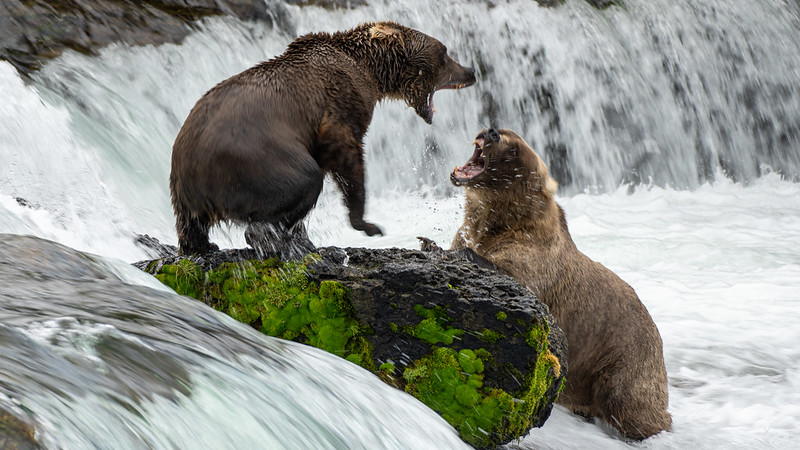 Two brown bears fight at Brooks Falls in Katmai National Park in Alaska. (Photo courtesy of Katmai National Park and Preserve)
Two brown bears fight at Brooks Falls in Katmai National Park in Alaska. (Photo courtesy of Katmai National Park and Preserve)
After 10 miles in the muck, we didn’t need to employ bear spray. The group drove off on Cascade River Road, having seen nothing but the warning signs.
Just before the North Fork Bridge, fellow Bellingham hiker Sue Wood yelped from the front seat as a bear scampered through the woods. I saw its faint shadow as I turned my head.
“It was huge,” Wood said, happy to see a predator safely from the car.
Elliott Almond’s outdoor column appears monthly. Email: elliottalmond4@gmail.com.

